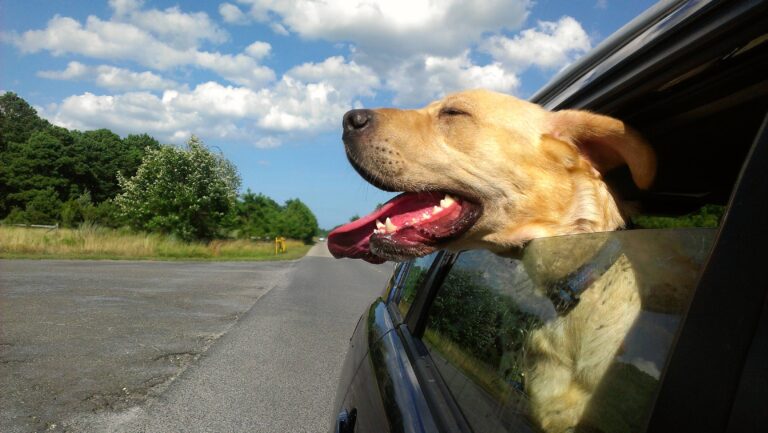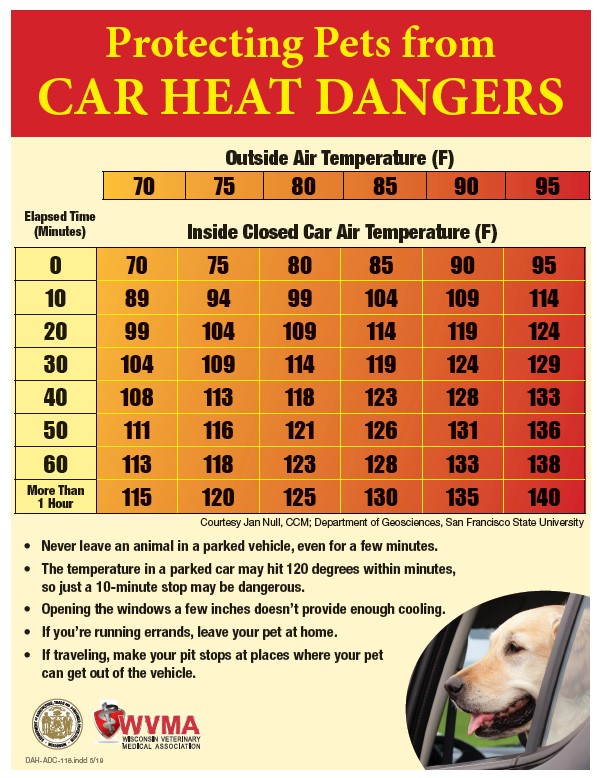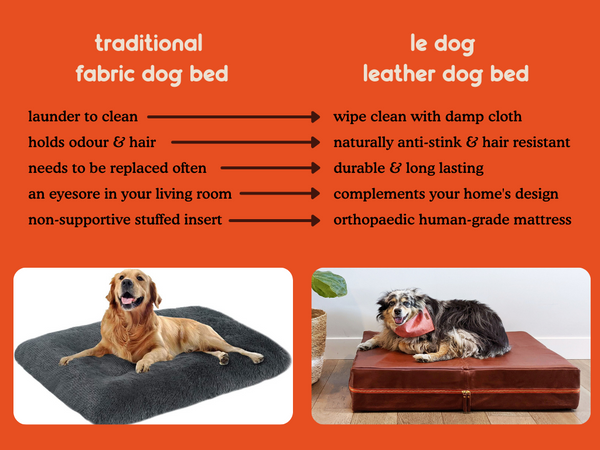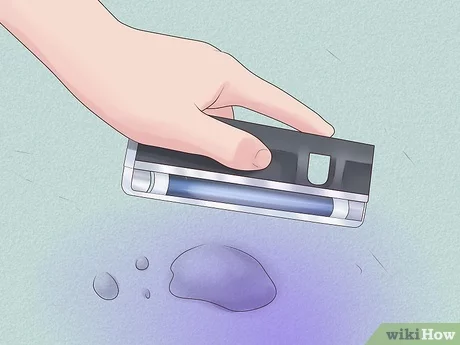Should a Dog Be in a Car Seat? Ensuring Pet Safety
Yes, a dog should be in a car seat. It ensures safety for both the pet and the driver.
Keeping your dog secure in a car seat can prevent distractions while driving. It also protects your dog in case of sudden stops or accidents. Car seats designed for pets offer comfort and stability. They keep the dog from wandering and getting hurt.
Small dogs especially benefit from car seats that elevate them to see out the window. This reduces anxiety and motion sickness. Many car seats come with harnesses for added security. Choosing the right car seat for your dog’s size and weight is important. Ensuring your pet’s safety while traveling enhances the overall driving experience.
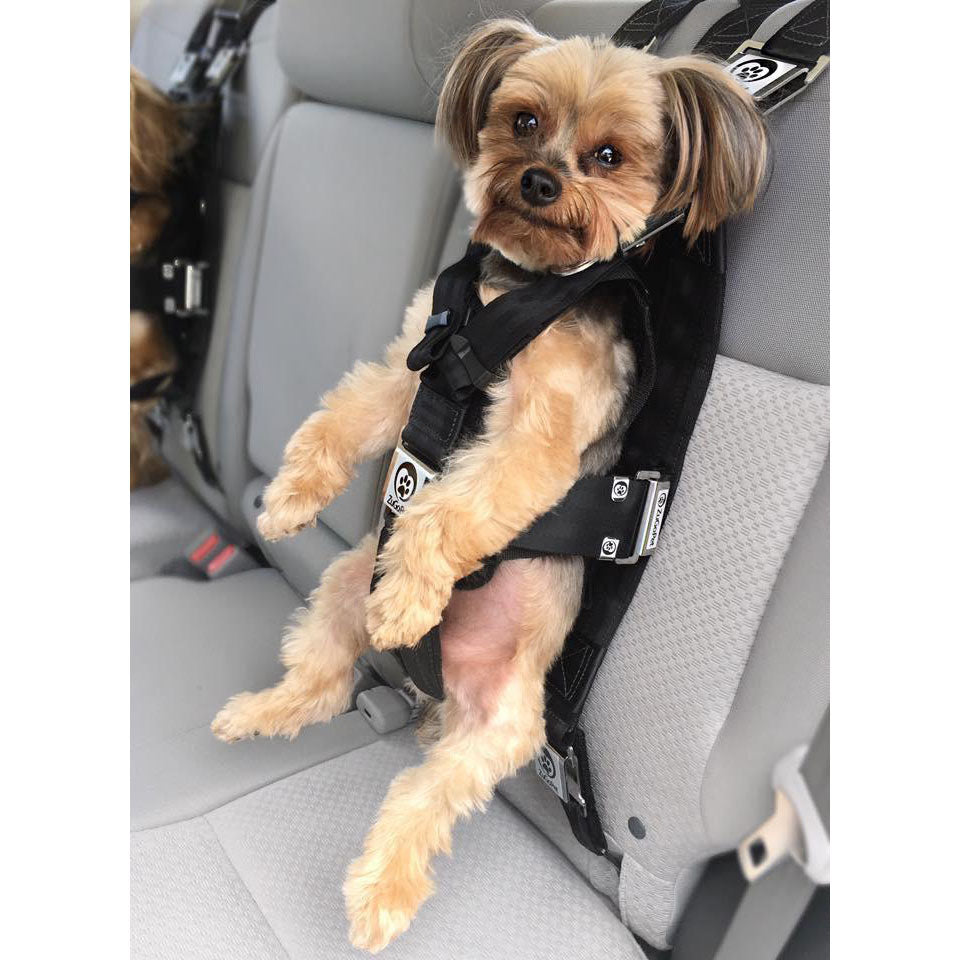
Credit: zugopet.com
Introduction To Pet Safety In Vehicles
Many dog owners love taking their furry friends on car rides. Ensuring your dog’s safety during these trips is vital. Unrestrained pets can cause accidents and injuries.
This blog will explore the importance of securing your dog and the risks of unrestrained pets on the road.
The Importance Of Securing Your Dog
Securing your dog in a car seat keeps them safe. It helps prevent distractions while driving. A secured dog will stay in place, reducing the risk of injury.
Car seats for dogs also provide comfort. They often have padded interiors and secure straps. This keeps your pet snug and safe during the ride.
| Benefits of Securing Your Dog | Description |
|---|---|
| Prevents Distractions | Keeps your dog in place, helping you focus on the road. |
| Reduces Injury Risk | Protects your dog from sudden stops and accidents. |
| Provides Comfort | Offers a padded and secure space for your pet. |
Risks Of Unrestrained Pets On The Road
Unrestrained pets can be dangerous. They may distract the driver by moving around. This can lead to accidents.
In a crash, an unrestrained pet can become a projectile. This can cause serious injuries to both the pet and passengers. Loose pets can also escape in case of an accident. This increases the risk of them getting lost or injured.
To keep your dog safe, always use a car seat or harness. This simple step can save lives.
- Pets can distract drivers by moving around.
- Unrestrained pets can become projectiles in a crash.
- Loose pets may escape and get lost or injured.
Current Road Safety Guidelines For Pets
Many pet owners are unsure if their dog should be in a car seat. Understanding current road safety guidelines for pets is crucial. These guidelines help keep your furry friend safe during travel.
Legal Requirements For Pet Travel
Several countries have laws about pet travel. These laws ensure pets are secure and not a distraction to drivers. Failing to follow these rules can result in fines.
| Country | Legal Requirement |
|---|---|
| USA | Some states require pets to be restrained. |
| UK | Pets must be restrained to avoid driver distraction. |
| Australia | Pets must not sit on the driver’s lap. |
Comparing Human And Pet Safety Standards
Human safety standards require seat belts and airbags. Pet safety standards are not as strict, but they are just as important. Pets need proper restraints to stay safe.
- Human Safety: Seat belts, airbags, child safety seats.
- Pet Safety: Car seats, harnesses, barriers.
Both humans and pets need protection during travel. A pet car seat can prevent injuries. It keeps your dog secure and reduces the risk of accidents.
The Case For Dog Car Seats
Many pet owners ask, should a dog be in a car seat? The answer is yes. Using a dog car seat keeps your furry friend safe. It also keeps you focused on the road. Let’s explore why dog car seats are important.
Benefits Of Using A Dog Car Seat
Safety is the most important benefit. A dog car seat keeps your pet secure during a drive. This reduces the risk of injury during sudden stops or accidents.
Comfort is another key benefit. Dog car seats are designed to be cozy. This helps pets feel relaxed and less anxious during travel.
Cleanliness is also a factor. Dog car seats keep your car cleaner. They catch hair and dirt, making it easier to clean up after a trip.
Legal compliance is important too. Some places have laws requiring pets to be restrained in cars. Using a dog car seat helps you follow these rules.
Types Of Dog Car Seats Available
There are several types of dog car seats to choose from. Each type has its own features and benefits.
| Type | Description | Best For |
|---|---|---|
| Booster Seats | Elevates the dog to see out the window. | Small to medium dogs. |
| Bucket Seats | Provides a cozy, enclosed space. | Small dogs. |
| Hammock Seats | Spans the back seat, creating a hammock. | Medium to large dogs. |
| Crate Seats | Works as a portable crate. | Dogs of all sizes. |
Each type of seat offers unique benefits. Choose the one that best fits your dog’s size and needs.
Selecting The Right Car Seat For Your Dog
Choosing the right car seat for your dog can ensure their safety and comfort during travel. A properly selected car seat can make road trips enjoyable and safe for both you and your pet. Let’s dive into the factors you need to consider and how to ensure the proper fit for your furry friend.
Factors To Consider When Buying
Safety features should be your top priority. Look for seats with harnesses, tethers, and strong straps. These features keep your dog secure and prevent injury.
Size and weight limits are crucial. The seat should accommodate your dog’s size and weight. Check the manufacturer’s guidelines for precise measurements.
Ease of installation is important. Choose a car seat that is easy to install and remove. This saves you time and effort.
Material and comfort play a key role. Look for seats made with soft, durable, and washable materials. Your dog will appreciate a cozy and clean seat.
Compatibility with your vehicle is essential. Ensure the car seat fits well in your car. Check if it works with your car’s seatbelt system.
Ensuring The Proper Fit For Your Pet
Measure your dog before purchasing a car seat. Use a tape measure to check their length, height, and weight. Compare these measurements with the seat’s specifications.
Test the fit by placing your dog in the seat. Make sure they can sit, stand, and lie down comfortably. Adjust the harness and straps for a snug, secure fit.
Observe your dog during the first few rides. Ensure they are comfortable and not anxious. If adjustments are needed, make them promptly.
Here is a table summarizing the key considerations:
| Factor | Details |
|---|---|
| Safety Features | Harnesses, tethers, strong straps |
| Size and Weight Limits | Accommodate dog’s size and weight |
| Ease of Installation | Quick and simple to install/remove |
| Material and Comfort | Soft, durable, and washable materials |
| Vehicle Compatibility | Fits well in your car, works with seatbelt system |
Installation And Usage Tips
Ensuring your dog is safe in the car is vital. Using a car seat can help. This guide will cover installation and training tips. Follow these steps to keep your furry friend secure and comfortable.
Step-by-step Installation Guide
- Choose the right car seat: Select a car seat suitable for your dog’s size and weight. Read the manufacturer’s recommendations.
- Secure the car seat: Place the car seat on the rear seat of your car. Use the seat belt to secure it firmly.
- Attach the harness: Connect your dog’s harness to the car seat’s tether. Ensure the connection is strong and secure.
- Adjust for comfort: Make sure your dog can sit, stand, and lie down comfortably. Adjust the harness if needed.
- Check stability: Gently push the car seat to ensure it doesn’t move. It should be stable and fixed in place.
Training Your Dog To Use The Car Seat
- Introduce the car seat at home: Let your dog explore and sit in the car seat indoors. Give treats and praise.
- Short practice sessions: Start with short car rides. Gradually increase the duration.
- Positive reinforcement: Use treats and praise to reward your dog for staying in the car seat.
- Consistency is key: Always use the car seat, even for short trips. This builds a routine.
- Monitor and adjust: Watch your dog’s behavior. Make adjustments to the harness or car seat if needed.
Following these tips will help your dog feel comfortable and safe in their car seat. Start today and enjoy worry-free car rides with your furry friend!
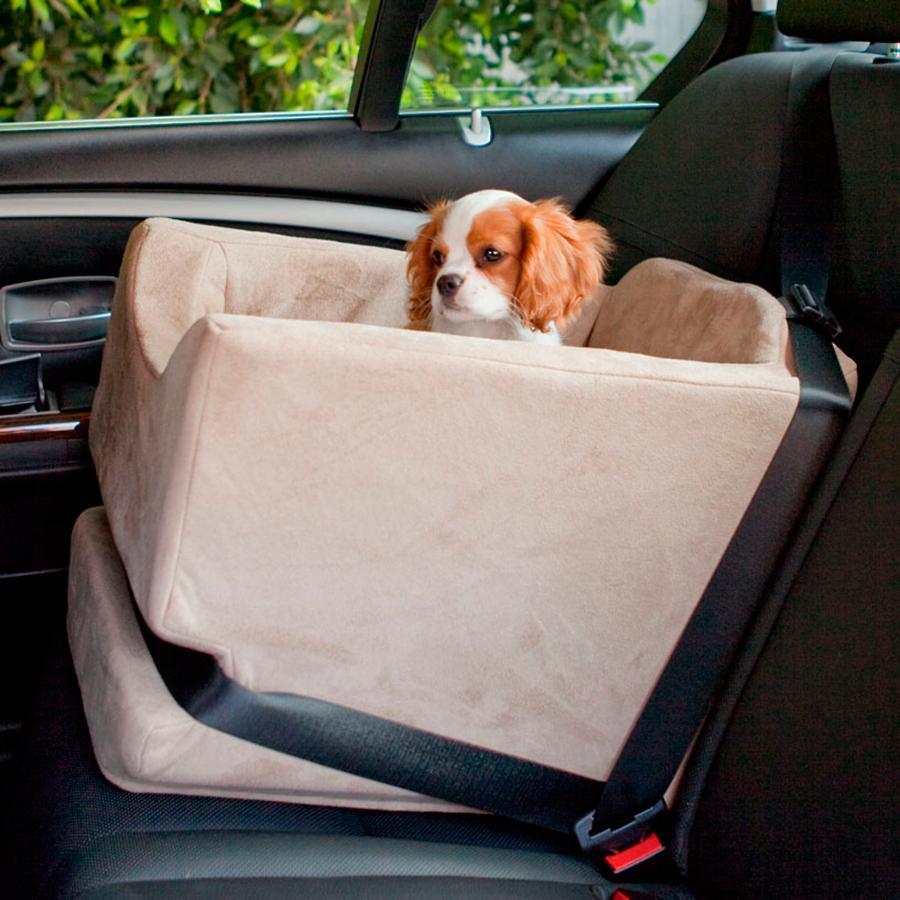
Credit: animalsmatter.com
Safety Features And Innovations
Ensuring your dog’s safety during car rides is crucial. Modern car seats for pets come with advanced features to keep them secure. These innovations are designed to protect your furry friend in various situations.
Advanced Materials And Design
Today’s dog car seats are made with high-quality materials. These materials are durable and easy to clean. Many seats include reinforced stitching for extra strength.
Designs are often ergonomic, providing comfort and support for your dog. The seats usually have non-slip bases to prevent movement during the ride. Look for padded interiors that offer cushioning.
| Feature | Benefit |
|---|---|
| High-Quality Materials | Durability and Easy Cleaning |
| Reinforced Stitching | Extra Strength |
| Non-Slip Bases | Prevent Movement |
| Padded Interiors | Comfort and Cushioning |
Emerging Technologies In Pet Safety
New technologies are making dog car seats even safer. Some seats now include integrated harness systems. These systems keep your dog secure in case of sudden stops.
Another innovation is temperature-regulating fabrics. These fabrics keep your dog cool in summer and warm in winter. Some car seats also have built-in sensors that alert you to any unusual movements.
- Integrated Harness Systems: Keeps your dog secure.
- Temperature-Regulating Fabrics: Ensures comfort in all seasons.
- Built-in Sensors: Alerts for unusual movements.
These features combine to offer maximum safety and comfort for your pet. Investing in a good dog car seat can make travel more enjoyable for both of you.
Alternatives To Dog Car Seats
Not all dogs like sitting in car seats. Some dogs may feel uncomfortable or restricted. Fortunately, there are other options to keep your furry friend safe while driving.
Harnesses And Seat Belts For Dogs
A dog harness is a great alternative to a car seat. A harness wraps around your dog’s body, distributing pressure evenly. This can be more comfortable for your pet. Attach the harness to a seat belt for extra security.
There are many types of dog seat belts. Some connect directly to your car’s seat belt system. Others clip onto a harness. These options are simple to use and ensure your dog stays in place during the ride.
| Product Type | Features |
|---|---|
| Harness | Distributes pressure, comfortable fit |
| Seat Belt | Clips to harness, keeps dog secure |
Barriers And Crates As Substitutes
Barriers are another effective solution. They can be placed between the front and back seats. These barriers create a safe space for your dog to move around without distracting the driver.
A crate can also serve as a safe traveling option. Crates keep dogs contained and prevent them from roaming the car. Many crates are designed for travel and can be secured with seat belts.
- Barriers: Creates a safe space, prevents distractions
- Crates: Contains the dog, can be secured with seat belts
Both barriers and crates offer a secure and comfortable environment for your dog. They ensure your pet is safe and your drive is distraction-free.
Personal Stories And Testimonials
Deciding whether to use a car seat for your dog can be challenging. Many dog owners have shared their experiences and stories. These personal accounts highlight the importance of dog car seats. Let’s dive into some real-life incidents and hear from owners themselves.
Real-life Incidents And Safety Outcomes
Real-life incidents often reveal the importance of dog car seats. For instance, Jane’s story is a perfect example. She was driving with her dog, Max, when another car hit them. Max was in a car seat. Thankfully, Max only had minor injuries. Jane believes the car seat saved Max’s life.
Another story involves Mark and his dog, Bella. They were in a similar accident. Bella was not in a car seat. She suffered severe injuries. Mark now strongly advocates for dog car seats. He regrets not using one earlier.
| Incident | Dog in Car Seat | Outcome |
|---|---|---|
| Jane and Max | Yes | Minor injuries |
| Mark and Bella | No | Severe injuries |
Owners Sharing Their Experiences
Many dog owners have shared their positive experiences with car seats. For example, Susan says, “My dog feels more secure in his car seat. He used to be anxious during rides. Now, he stays calm and enjoys the journey.”
John, another dog owner, states, “Using a car seat has made travel safer for my dog. I no longer worry about sudden stops or sharp turns. The car seat keeps him in place.”
- Susan: Her dog feels secure and calm in the car seat.
- John: He feels more at ease knowing his dog is safe.
These testimonials highlight the benefits of using a car seat for dogs. They provide peace of mind and ensure safety during travel.
Professional Insights
When it comes to traveling with your furry friend, ensuring their safety and comfort is paramount. Should a dog be in a car seat? Let’s delve into professional insights to understand the best practices.
Veterinary Advice On Pet Travel
Veterinarians strongly advise using a car seat or harness for dogs. It prevents injuries during sudden stops or accidents. Dr. Jane Smith, a renowned veterinarian, says, “A secure car seat can save your dog’s life.” Dogs are less anxious when securely restrained. They feel safe and comfortable.
- Reduced distraction for the driver.
- Prevents injuries to pets.
- Keeps dogs from roaming inside the car.
A study by the American Veterinary Medical Association shows that unrestrained dogs are at a higher risk during car accidents. Ensuring your dog is in a car seat or harness is crucial.
Automotive Experts On Pet Accommodations
Automotive experts agree with veterinarians. They recommend specialized car seats for pets. These seats provide extra protection and comfort. John Doe, an automotive safety expert, says, “Pet car seats are designed to absorb impact and keep pets safe.”
The table below highlights the benefits of using a dog car seat:
| Benefit | Description |
|---|---|
| Enhanced Safety | Reduces risk of injury during accidents. |
| Comfort | Provides a cozy space for pets. |
| Driver Focus | Minimizes distractions from pets. |
Using a dog car seat ensures better safety and comfort for your pet. Both veterinary and automotive experts emphasize its importance. Prioritize your dog’s well-being by investing in a quality car seat.

Credit: www.kurgo.com
Conclusion And Best Practices
Ensuring your dog’s safety during car rides is crucial. Using a dog car seat offers many benefits. In this section, we summarize the main advantages and provide some key recommendations for traveling with dogs.
Recap Of Dog Car Seat Advantages
A dog car seat provides several key benefits:
- Enhanced safety: Keeps your dog secure in one spot.
- Reduced driver distraction: Prevents your dog from roaming in the car.
- Comfortable travel: Cushioned seats offer a cozy ride for your pet.
- Cleaner car: Keeps fur and dirt contained.
Final Recommendations For Traveling With Dogs
Follow these best practices for a safe and enjoyable trip:
- Choose the right car seat: Ensure it fits your dog’s size and weight.
- Install correctly: Secure the car seat according to the instructions.
- Use a harness: Attach your dog’s harness to the car seat for added safety.
- Take breaks: Allow your dog to stretch and relieve itself on long trips.
- Stay hydrated: Provide water during stops to keep your dog hydrated.
| Best Practices | Details |
|---|---|
| Choose the right car seat | Ensure it fits your dog’s size and weight. |
| Install correctly | Secure the car seat according to the instructions. |
| Use a harness | Attach your dog’s harness to the car seat for added safety. |
| Take breaks | Allow your dog to stretch and relieve itself on long trips. |
| Stay hydrated | Provide water during stops to keep your dog hydrated. |
Following these tips ensures a safe and happy journey for both you and your furry friend.
Frequently Asked Questions
What Is The Best Way To Transport A Dog In A Car?
Use a crash-tested pet carrier or harness. Secure it in the back seat. Ensure proper ventilation. Take regular breaks.
What Is The Safest Way To Have A Dog In The Car?
Secure your dog in a crash-tested crate or harness. Use a pet barrier for larger dogs. Avoid letting dogs roam freely. Keep windows closed or slightly open. Never leave your dog alone in the car.
What Is The Safest Restraint For A Dog In A Car?
The safest restraint for a dog in a car is a crash-tested harness or a secured crate. Both options ensure your dog’s safety and comfort during travel. Always secure the harness to the car’s seat belt system or place the crate on the back seat for optimal protection.
Do Car Seats Help Dogs With Anxiety?
Yes, car seats can help dogs with anxiety. They provide security, comfort, and reduce motion sickness. Car seats also prevent distractions while driving.
Conclusion
Ensuring your dog’s safety in the car is crucial. Using a car seat minimizes risks during travel. It provides comfort and protection. Prioritize your pet’s well-being and make your journeys worry-free. Invest in a quality car seat for your furry friend today.
Safe travels start with proper precautions.
- Can I Get in a Taxi Without a Car Seat? - January 26, 2025
- Can I Get Chlamydia From a Toilet Seat? - January 26, 2025
- Can I Get an Uber With a Car Seat? - January 26, 2025


